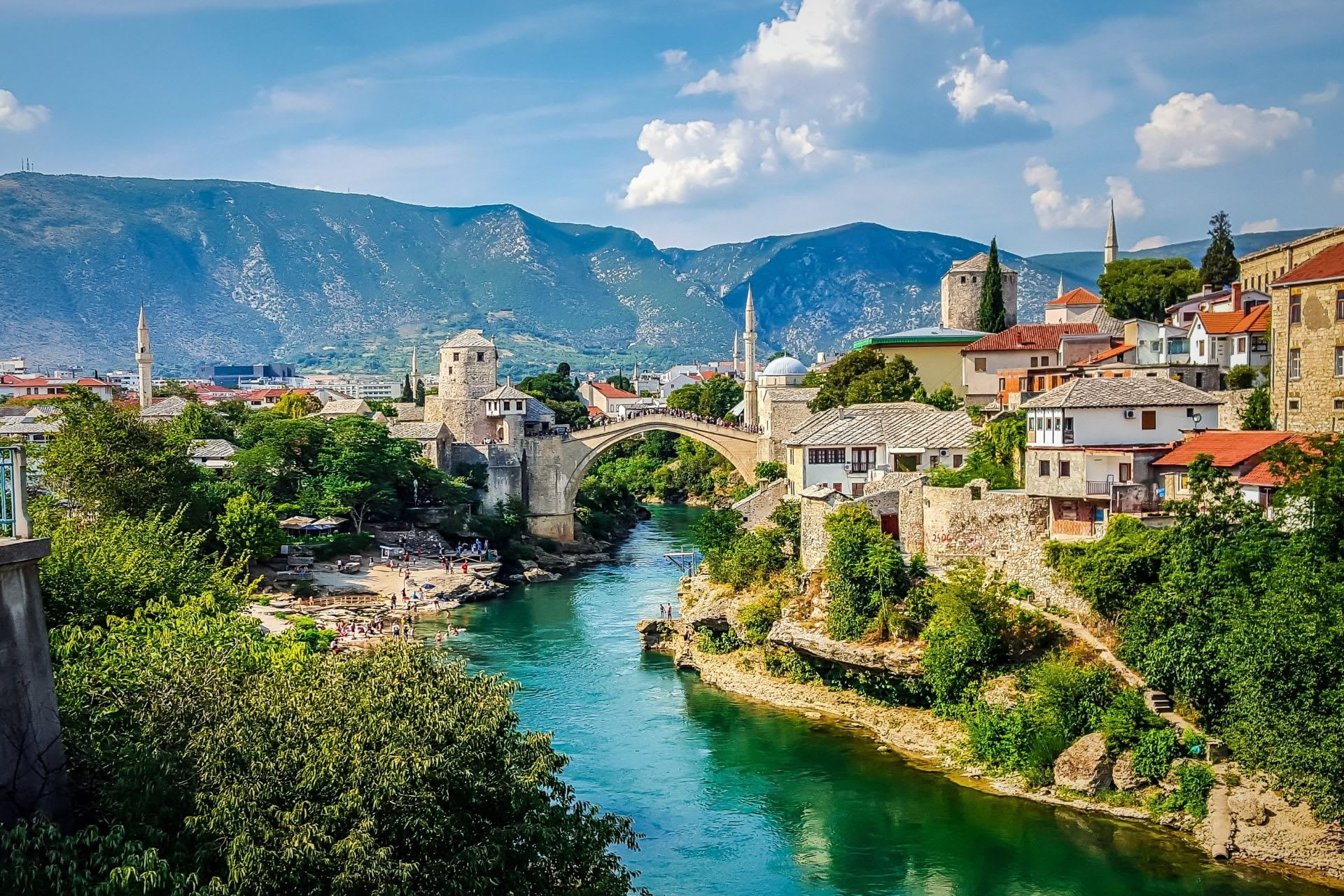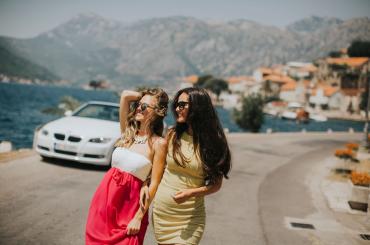
Tour Croatia+ trip
Croatia, Bosnia and Herzegovina, Serbia, Northern Macedonia, Albania and Montenegro each boast distinct identity and cultural wonders but similar social openness to guests and travellers. Due to the fragmentation of the Balkans and its turbulent history, each country is fascinating, complex and deeply imbued with history. This is a journey to a breathtaking corner of the world.
Extremely versatile trip designer with an established career in travel business
Fill out a few details and get a detailed itinerary with all inclusions and trip details - we can customize them together
There’s a rich history here with Roman, Byzantine, Ottoman, Austro-Hungarian and Yugoslavian influences still deeply felt in the region. Take the time to understand the complicated story and to appreciate the complexity of the featuring countries, their presence and tumultuous past. Of course, this experience may be different from Western Europe, but travelling in the region is rewarding because of the history, culture and relatively affordable travel costs. You’ll quickly fall in love with the region.
Visit a little-known corner of the Balkans such as Albania, where you’ll experience hilltop fortresses, high alpine meadows and traditional rural life. In North Macedonia, the buzzing street life of Skopje awaits, as well as the soothing tranquillity of Lake Ohrid and the Church of Jovan Kaneo.
What can be said about Croatia? Try living the Croatian way and make memories that will last a lifetime. You’ll discover the mesmerising nature, the azure waters of the Adriatic, medieval architecture and sumptuous local dishes.
Šibenik is the oldest native Croatian town on the shores of the Adriatic Sea. It is famous for its fortifications and Cathedral of St. James
Take a few minutes to learn some basics about the six countries you are about to visit.
Croatia
With approximately 1,200 islands, azure waters and colourful villages rich in history, Croatia is drawing more and more travellers to its shores. Croatia is Mediterranean’s fastest-growing destination, luring travellers with its pristine national parks, adventure sports and UNESCO World Heritage sites such as the medieval Old Town of Dubrovnik. Croatia entered the European Union in summer 2013 as the 28th member state.
The mere mention of Croatia conjures up images of colourful landscapes, sparkling waters and fortified towns furnished with quaint outdoor cafés. Many of Europe's greatest empires including the Romans, Venetians, Ottoman Turks and Habsburgs, left their mark on Croatia in the form of architecture, language, art and food. Situated at the crossroads of the Mediterranean, Central Europe and the Balkans, Croatia has it all, from beautifully preserved medieval cities to stunning natural wonders.
Its capital city is the charming city of Zagreb, which forms one of the country's primary subdivisions, along with its twenty counties. Croatia has a population of 4.28 million, most of whom are Roman Catholics.
Bosnia and Herzegovina
Bosnia and Herzegovina is an almost landlocked country – it has a narrow coast at the Adriatic Sea, about 20 kilometres long surrounding the town of Neum. It is bordered by Croatia to the north, west and south; Serbia to the east; and Montenegro to the southeast. In the central and eastern interior of the country, the geography is mountainous, in the northwest it is moderately hilly, and the northeast is predominantly flatlands. The inland Bosnia is a geographically larger region and has a moderate continental climate, with hot summers and cold and snowy winters. The region's climate has given Bosnia and Herzegovina a wealth of diverse flora and fauna. Approximately 50% of the land is forested.
The capital city of Bosnia and Herzegovina, Sarajevo, is located near the centre of the country.
The country's population is 3.84 million, most of whom are Bosnians, then Serbs and the least of all are Croats and all three languages are spoken in the country. Islam is the majority religion in Bosnia and Herzegovina and the remaining population identifies as Christians. There is a small Jewish community as well.
Serbia
The Republic of Serbia is one of the former Yugoslav Republics that kept the name of the federation. Serbia is a sovereign state situated at the crossroads of Central and Southeast Europe in the southern Pannonian Plain and the central Balkans. It borders Hungary to the north; Romania and Bulgaria to the east; Macedonia to the south; Croatia, Bosnia and Herzegovina, Montenegro to the west and claims a border with Albania through the disputed territory of Kosovo. Serbia numbers around 7 million residents. Its capital, Belgrade, ranks among the oldest, the largest and the most eventful cities in Southeastern Europe.
Archaeological sites across Serbia showcase the remains of the different great civilisations that once ruled this region, starting from the Neolithic culture of Lepenski Vir (dating back more than 9,000 years) and the Starčevo culture to artefacts left behind by ancient Romans to medieval Serbian, Turkish and Austro-Hungarian fortresses.
Northern Macedonia
Five hundred years of Ottoman rule, followed by a tug of war over its territory and being part of Yugoslavia, have left the Republic of Macedonia and its capital seeking an identity. But, for the visitor, it is all part of the fascination of land that is a melting pot of Christians and Muslims, old and new. The capital is Skopje, its most famous “daughter” is Mother Teresa. A reconstruction of her home houses a commemorative museum.
Back in 1963, a major earthquake struck Skopje just before dawn, destroying around 80% of its buildings; the replacements were typically concrete and Communist in style. However, that is gradually changing thanks to the controversial Skopje 2014 project. Hundreds of millions of euros have been spent on constructing or makeovers of buildings in a Neoclassical style as well as building new monuments and features.
Less than three hours from Skopje, there is lovely Ohrid and the lake of the same name, both part of the UNESCO World Heritage site.
Albania
Albania, on the Southeastern Europe’s Balkan Peninsula, is a small country with Adriatic and Ionian coastlines and an interior crossed by the Albanian Alps. The country has many castles and archaeological sites. Capital Tirana centres on sprawling Skanderbeg Square, site of the National History Museum, with exhibits spanning antiquity to post-communism, and frescoed Et’hem Bey Mosque.
After World War II, Albania became a Stalinist state under Enver Hoxha and remained staunchly isolated until it transitioned to democracy after 1990. The 1992 elections ended 47 years of communist rule, but the latter half of the decade saw a quick turnover of presidents and prime ministers. In 2014 the European Commission recommended Albania as a candidate for European Union membership.
Montenegro
Montenegro or the „Black Mountain“ is a small and beautiful country located in Southeastern Europe. It has a coast on the Adriatic Sea and it is bordered by Croatia to the west, Bosnia and Herzegovina to the northwest, Serbia to the northeast, Kosovo to the east and Albania to the southeast. The official name of the country is Crna Gora with the largest city which is also the administrative and economic centre, Podgorica that counts 173 000 inhabitants.
The old Royal Capital is Cetinje and in the present days, this is the historical and the cultural centre. Up to the middle of the year 2006, the country had been a part of the Confederate State Union of Serbia and Montenegro but on 3 June of the same year, it declared its independence.
The country of Montenegro has a huge array of both natural and man-made wonders. This land of fairytales will take your breath away with its gorgeous mountains, beautiful beaches, clear sea and remains of its long history.
Welcome to Zagreb, the vibrant capital of Croatia. After checking into your hotel, take a guided walking tour of the city's historic Upper Town. Explore the iconic Stone Gate, the stunning Church of St. Mark with its colorful tiled roof, and admire the exterior of the grand Zagreb Cathedral. Spend the evening at leisure, perhaps dining at a local restaurant. Overnight at a hotel in Zagreb.
Start your day with a hearty breakfast before departing for the Adriatic coast. En route, visit the breathtaking Plitvice Lakes National Park, a UNESCO World Heritage Site renowned for its cascading lakes and lush forests. Enjoy a boat ride and immerse yourself in the park's natural beauty. Continue to Zadar for an overnight stay at a hotel.
After breakfast, explore Zadar's rich history with visits to the Cathedral of St. Anastasia, the church of St. Donat, and the Roman Forum ruins. Travel south to Šibenik and marvel at the UNESCO-listed Cathedral of St. James, a remarkable stone structure with no mortar or wood. Proceed to Split, where you'll tour the ancient Diocletian's Palace and other historic sites. Overnight at a hotel in Split.
Belgrade has been battled over in 115 wars and razed 44 times, but is now known best for its spectacular nightlife and restaurants
Following breakfast, journey through the scenic landscapes of Croatia and Bosnia to Mostar. Discover the UNESCO-protected Old Town and the iconic 14th-century bridge, a symbol of the city. Learn about Mostar's rich history and culture, shaped by various influences over the centuries. Overnight at a hotel in Mostar.
After breakfast, drive through the picturesque Neretva Valley to Sarajevo, the capital of Bosnia and Herzegovina. Take a guided city tour, visiting Baščaršija, the old merchant quarter, and significant historical sites like the Svrzina House and Princip Bridge. Experience the unique blend of Eastern and Western cultures in this diverse city. Overnight at a hotel in Sarajevo.
Enjoy breakfast before traveling through Eastern Bosnia and the Drina River Valley into Serbia. Arrive in Novi Sad, situated on the Danube River. Explore Petrovaradin Fortress, the old quarter, and other historical landmarks. Overnight at a hotel in Novi Sad.
Start the day with a tour of Novi Sad, including the University, National Theatre, and Petrovaradin Fortress. Continue to Belgrade, stopping at the Honey Museum along the way. In Belgrade, visit the fortress, Kalemegdan Park, the Temple of St. Sava, and the Museum of Yugoslavia. Enjoy dinner in Skadarlija, a lively bohemian quarter. Overnight at a hotel in Belgrade.
The Vardar River divides Skopje into two parts: Slavic and Ottoman. Both parts are rich in monuments
After breakfast, travel to the Šumadija region, known as "Serbian Tuscany." Visit a respected winery for tastings and tour the Karađorđević family Museum Complex. Continue to Vrnjačka Banja, famed for its hot springs. Check into your hotel and enjoy some leisure time. Overnight at a hotel in Vrnjačka Banja.
After breakfast, depart for Skopje, stopping at the Monasteries of Žiča and Studenica. Continue through the Ibar Valley and Kosovo Polje to Skopje. Explore both the Slavic and Ottoman sides of the city, visiting landmarks like the Stone Bridge, Old Bazaar, and Skopsko Kale Fortress. Overnight at a hotel in Skopje.
After breakfast, sightsee in Skopje before heading to Ohrid, known as the "Jerusalem of the Balkans." Discover its numerous churches, the lakeshore, and cultural sites. Enjoy the blend of historical and natural beauty in this UNESCO World Heritage site. Overnight at a hotel in Ohrid.
Start with a tour of Ohrid and Lake Ohrid, including the Monastery of Saint Naum. Cross into Albania and continue to Tirana. Explore the colorful architecture and historical sites like Skanderbeg Square and the National History Museum. Overnight at a hotel in Tirana.
After breakfast, tour Tirana's key attractions. In the afternoon, drive along the Adriatic coast to St. Stefan, then continue to Budva. Explore the ancient Old Town, filled with historical and cultural landmarks. Overnight at a hotel in Budva or Bečići.
Kotor is the city of traders and famous sailors, situated in Boka Kotorska Bay
After breakfast, visit Cetinje's monasteries and continue to Tivat in the Bay of Kotor. Explore Perast and its picturesque islands before heading to Dubrovnik. Enjoy a city tour of Dubrovnik, including Stradun, the Rector's Palace, and the city's famous walls. Overnight at a hotel in Dubrovnik.
Begin with a tour of Dubrovnik's historic sites. In the afternoon, visit Cavtat and the house of painter Vlaho Bukovac. Enjoy the scenic beauty and rich history. Overnight at a hotel in Dubrovnik.
After breakfast, enjoy leisure time until your transfer to Dubrovnik airport. Take the opportunity to purchase unique souvenirs like arancini, sugared almonds, or embroidered tablecloths from Konavle before departing.
We will double-check availability and make reservations for your rooms, restaurants, guides etc.
With reservations confirmed, we will prepare the best offer possible in regard to your arrival date & party size
You will get the offer via e-mail, along with the payment options. Feel free to request further customisations!
9 DAYS
9 DAYS
6 DAYS



